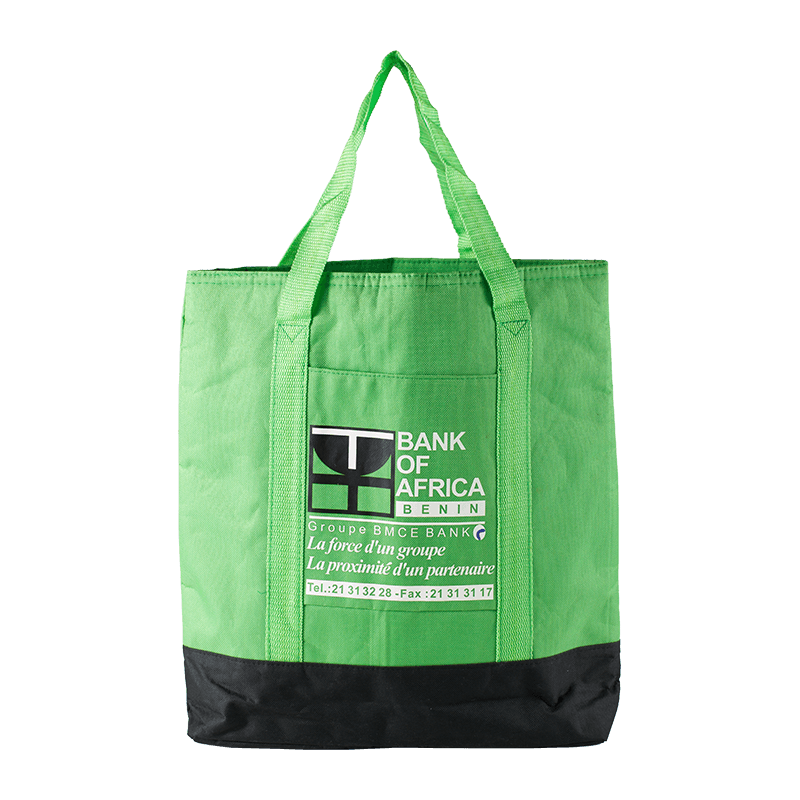Packing meals for school or work requires a reliable way to keep food fresh and at the right temperature. Whether you need an insulated tote for food, a compact lunch bag cooler tote, or a heavy-duty delivery cooler bag, selecting the right option depends on your needs. This guide explores features to look for and how different styles compare.
1. Why Insulation Matters in Food Totes
The key to keeping meals fresh is proper insulation. Insulated totes for food use materials like foam or thermal lining to maintain temperatures, preventing spoilage. For kids' school lunches, a lunch bag cooler tote with lightweight insulation is ideal, while professionals who carry multiple meals may prefer a larger delivery cooler bag with thicker insulation.
If you frequently pack perishables like yogurt or deli meats, look for insulated totes for food with airtight seals or removable ice packs. Some high-end lunch bag cooler tote models even include gel-lined walls for extended cooling. Meanwhile, delivery cooler bags designed for meal prep services often feature heavy-duty insulation to keep food safe for hours.

2. Size and Portability: Finding the Right Fit
A good lunch bag should be spacious enough for containers but still easy to carry. A lunch bag cooler tote with multiple compartments helps organize snacks, drinks, and utensils neatly. For students, a compact yet roomy design fits easily in backpacks, while office workers might prefer a sleeker insulated tote for food with a professional look.
On the other hand, delivery cooler bags prioritize capacity and durability. Caterers and food delivery drivers use these larger totes to transport multiple meals securely. If you meal prep for the week, a delivery cooler bag with dividers can separate different dishes while keeping them chilled.
3. Material and Durability for Daily Use
Since lunch bags face daily wear and tear, material choice is crucial. Most insulated totes for food are made from polyester or nylon, which resist stains and moisture. A lunch bag cooler tote with a waterproof interior is especially useful for preventing leaks from dressings or fruit containers.
For tougher conditions, delivery cooler bags often feature reinforced stitching and rugged exteriors. Some even have thermal-reflective layers to enhance cooling efficiency. Whether you choose a simple lunch bag cooler tote or a commercial-grade delivery cooler bag, durability ensures long-term use.
4. Extra Features That Enhance Convenience
Beyond basic insulation, many modern lunch totes include helpful extras:
- Adjustable straps: A lunch bag cooler tote with a crossbody strap offers hands-free carrying.
- Easy-clean linings: Insulated totes for food with wipeable interiors simplify maintenance.
- Pockets and accessories: Some delivery cooler bags come with detachable ice packs or utensil holders.
If you need versatility, a convertible lunch bag cooler tote that doubles as a work tote is a smart investment. Meanwhile, delivery cooler bags with foldable designs save space when not in use.
5. Uses for Different Cooler Tote Types
- For kids' lunches: A fun, lightweight lunch bag cooler tote with easy-open zippers.
- For office meals: A stylish insulated tote for food that fits containers and a water bottle.
- For meal delivery or picnics: A spacious delivery cooler bag with extended cooling performance.
6. Picking the great Lunch Tote
Choosing between an insulated tote for food, a lunch bag cooler tote, or a delivery cooler bag depends on your lifestyle. Students and professionals benefit from compact, well-insulated designs, while food delivery services need heavy-duty performance. By considering insulation, size, material, and extra features, you can find the ideal cooler tote to keep meals fresh all day.
Investing in the right bag ensures food safety, reduces waste, and makes meal prep hassle-free—whether for school, work, or on-the-go deliveries.



 English
English Español
Español عربى
عربى







